India News
2020: Pandemic, protest and popular unrest
Most people will have memories of 2020 as the year in which the unforeseeable happened.
Published
5 years agoon
By

Most people will have memories of 2020 as the year in which the unforeseeable happened. Who would know that there will be virus that will mutate and continue killing people of all ages when all the killer diseases, even HIV/AIDS, barring cancer, came under the power of medicine.
From coronavirus to cyclones, unplanned national lockdown to migrant labour crisis, anti-CAA protests to farmers’ protests, riots in Delhi after 36 years and the verdict in the Babri Masjid conspiracy case to the work beginning the construction of the Ram Mandir right in middle of the pandemic and tensions at Indian borders with China and Nepal to Donald Trump’s India visit, the entire year contained the world-changing developments. And a dedicated attempt to leave a new political legacy on New Delhi by rebuilding Parliament in the Central Vista redevelopment, shorn of Edwin Lutyens and the British Raj.
While India struggled with the pandemic, the year saw some sensational crime stories such as the Vikas Dubey encounter, the Hathras gangrape case, Palghar mob lynching and Ballabhgarh daylight murder that dominated media headlines, drawing room discussions and social media trolling. Moreover, the swollen streams of jobless migrants heading home from cities shut in the nationwide lockdown, prompted by sheer panic, and the Hathras case shook the nation in 2020.
As 2020 ends, here are the top-of-the-mind political developments of the year.
- Anti-CAA protests
2020 dawned with protests against the Citizenship Amendment Act occurred after the government enacted the law on December 12, 2019. Citizens across the country were on the streets, demanding the abrogation of the discriminatory citizenship law. Most of these protests were led by Muslim women.
The year began with the Shaheen Bagh protests which began in December 2019 after the police brutality in Jamia Millia Islamia and Aligarh Muslim University, when students were protesting the citizenship law. On the lines of Shaheen Bagh protests, the protests against Citizenship Amendment Act started in various parts of the country.

The Shaheen Bagh protests, however, hit the news in 2020 due to increasing number of attacks on the protesters by CAA supporters which resulted in the riots in Northeast Delhi.
The women of Shaheen Bagh were against the CAA because they saw it as anti-minority, specifically against the Muslims of India. The citizens had the fear that many of them would be declared non-citizens after implementing the law and would become stateless and could be locked up in detention centres, with the talk of the National Register of Citizens, like in Assam.
The agitation lasted 101 days, finally, with the Covid-19 outbreak and the lockdown, the government was able to quell the protests. The CAA has not been withdrawn, but its rollout has been delayed in West Bengal, the BJP is not talking about CAA and NRC in its campaign, apart from their use as dogwhistles.
- Delhi riots
On the evening of February 23, riots broke out in Northeast Delhi between anti-CAA and pro-CAA people which took a communal turn and led to the death of over 53 people, including a policeman and an Intelligence Bureau personnel, while 200 were reported injured. The communal tensions continued for the next week. Shops and houses were burnt down and even mosques were attacked and protesters threw stones, set vehicles and shops ablaze and transformed a small part of the capital into a war zone. The violence occurred a few hours before United States President Donald Trump was expected to visit Delhi.

The opposition’s demand for the resignation of Union Home Minister Amit Shah didn’t work as Shah replied that the Congress had no right to point fingers at any party. Delhi Chief Minister Arvind Kejriwal paraded his usual line, that Delhi Police was not under his control and the Centre remained the boss.
- Madhya Pradesh political crisis
In 2018, the Congress emerged as the single largest party in Madhya Pradesh by winning 114 seats in Madhya Pradesh Assembly elections and had formed the government with the help of one Bahujan Samaj Party MLA and one Samajwadi Party MLA and four independent MLAs. The BJP gave the Congress a tough fight and bagged 109 seats. Mayawati’s Bahujan Samaj Party won two seats while Akhilesh Yadav’s Samajwadi Party had won one seat.
On March 5, 2020, 10 MLAs including 6 Congress, 2 BSP, 1 SP member and 1 Independent Member of Parliament flew to Delhi without informing the party. Initially, 6 Congress MLAs returned home while the remaining 4 flew to Bengaluru, where Congress MLA Hardeep Dang resigned. The remaining 3 MLAs returned soon and denied the claims made by Congress leaders that they were a part of horse-trading.

Congress leader Jyotiraditya Scindia switched to the BJP in the presence of JP Nadda. After joining the party, Scindia slammed the Madhya Pradesh CM Kamal Nath and other Congress leaders for not accepting his importance in the party. Later, he got the BJP Rajya Sabha ticket.
Both the parties moved to the Supreme Court for a floor test in Madhya Pradesh and the Court set March 20, 2020 for the floor test in Madhya Pradesh Legislative Assembly. Kamal Nath then quit. By July 23, 2020, another 3 Congress MLAs had exited the party to join the BJP. The Madhya Pradesh Assembly was adjourned till March 26 in view of the state government’s concern over coronavirus even as the BJP raised the demand for the holding of a floor test.
- Ram Mandir Bhoomi Pujan
Ayodhya continued to remain in focus and grabbed media headlines. Just months after the Supreme Court settled the decades-old land dispute over the site where the Babri Masjid stood till 1992. The Ram Mandir construction officially started after a Bhoomi Poojan ceremony. On August 5, Prime Minister Narendra Modi along with Yogi Adityanath and RSS chief Mohan Bhagwat performed the Bhoomi Pujan ceremony which was live telecast.

Three-day long Vedic rituals were held before the ground-breaking ceremony where PM Modi installed a 40-kg silver brick as the foundation stone of the Ram Temple. There were a large number of devotees who attended the ceremony despite the Covid outbreak. The guest list, including religious leaders who formed part of the movement that started in the 1980s, was limited to 175 people in view of the Coronavirus. All 7,000 temples in a 7 km radius of Hanumangarhi were also asked to join the celebrations by lighting diyas.
PM Narendra Modi paid his respects to the many who had sacrificed for the Ram temple. Bhagwat also thanked L.K. Advani for his contributions to the movement to get the temple built.
- Nirbhaya convict hanged
Finally, justice was delivered in the Nirbhaya rape case almost after eight years. All four death-row convicts in the 2012 Nirbhaya gangrape and murder case were hanged on March 20. Akshay Thakur, Vinay Sharma, Pawan Gupta and Mukesh Singh had been sentenced to death by a trial court in 2013.
The 23-year-old physiotherapy student died from her injuries days after being raped by six men on a moving bus. The incident caused outrage and led to new anti-rape laws in India.

Six people were arrested in the case, one of them, Ram Singh, was found dead in jail in March 2013, having apparently taken his own life. Another, who was 17 at the time of the attack, was released in 2015 after serving three years in a reform facility.
In the last few months, all four convicts filed petitions in the Supreme Court in a bid to reduce their sentences to life imprisonment but the top court rejected their petitions, leaving the men with no other legal recourse.
A last-minute appeal to have the death penalties commuted was also rejected hours before their hanging. Minutes after the hanging, the victim’s mother said she hugged her daughter and finally got justice.
- Babri conspiracy case
A special CBI court acquitted all 32 accused in the Babri Masjid demolition case saying the act was spontaneous while the country’s apex court had already termed the demolition of Babri as a pre-planned act. The accused, including LK Advani, Murli Manohar Joshi, Uma Bharati, Kalyan Singh, faced charges like criminal conspiracy, rioting, promoting enmity between different groups, and unlawful assembly.
Acquitting accused, the court said the demolition of Babri Masjid was not pre-planned and the accused had tried to stop the mob, those who climbed on the dome were anti-social elements and the authenticity of the audio and video clips produced by the CBI is not reliable.

At the end of a long trial, each of the 32 living accused persons were given a clean chit and 17 other accused who died during the 28 years since the demolition.
In the title suit, the verdict for which was given in November 2019, the bench, headed by then Chief Justice of India Ranjan Gogoi, had observed that the entire structure of the mosque was brought down in a calculated act of destroying a place of public worship. Muslims have been wrongly deprived of a mosque which had been constructed well over 450 years ago, they said.
A similar sentiment was expressed in the report of the Justice Liberhan Commission, set up by the then P.V. Narasimha Rao government within days of the demolition. Justice M.S. Liberhan, who took 17 long years to complete his findings, said the demolition was orchestrated.
All evidence gathered by the country’s premier investigation agency was said to be insufficient or weak by the court. The court acquitted all the accused by giving simple reason that the video and audio clips furnished by CBI as the most incriminating evidence against them appeared to be either doctored or fabricated.
Also Read: World highlights 2020: Trump, Covid, Biden, Vaccine?
- Bihar Assembly election
Bihar pulled off a mammoth electoral exercise in the wake of the Covid-19 which saw the National Democratic Alliance of Nitish Kumar’s Janata Dal United and the BJP retain power by winning 122 seats in a closely contested 243-member Bihar legislative assembly election.
Managing victory in 72 seats, the BJP gained an upper hand while the JDU as a part of the NDA managed to win 52 seats in the 243-seat legislative assembly. More importantly, the BJP emerged as the stronger partner, returning with a tally far greater than that of the JDU, a development that is expected to alter power equations in the times to come. The NDA has contested the election on the formula of equal seat share in the state.

The fear and anxiety experienced by Muslims during the BJP’s campaign which was more focused on Hindutva rhetoric, triggered the success of Asaduddin Owaisi’s All India Majlis-e-Ittehadul Muslimeen, which won 5 Muslim-dominated seats.
The Mahagathbandhan, comprising Rashtriya Janata Dal, Congress, and Left parties, secured 110 seats. Winning 75 seats, the Tejashwi Yadav-led RJD emerged as the single largest party. The Congress could win only 19 of the 70 seats it contested, impacting the Mahagathbandhan tally. In contrast, the Left performed beyond expectations by winning 20 seats out of the 29.
- Hathras gang rape case
On September 14, 2020, a 19-year-old Dalit woman was gangraped by upper caste men in Hathras district of Uttar Pradesh. After fighting for her life for two weeks, the victim died in Delhi’s Safdarjung hospital.
The nationwide outrage, however, was triggered when UP Police cremated the victim’s remains at 3 am on September 29, 2020 without the consent of the family. The case and its subsequent handling was the subject of protests against the Yogi Adityanath government by activists and opposition.

UP Police didn’t let media or opposition leaders meet the victim’s family. After an abortive march, Congress leaders Rahul Gandhi and Priyanka Gandhi Vadra met the family of the victim in their second attempt.
The BJP criticised the Congress saying it doesn’t care about the welfare of the people or the victim’s family and it was all politics in meeting the victim’s family, the Congress accused the BJP government of being insensitive in dealing with the incident and the protests that followed.
- Kangana Ranaut vs Shiv Sena
A war of words broke out between actor Kangana Ranaut and the ruling Shiv Sena in Maharashtra after Ranaut posted on Twitter that she feels unsafe after Sushant Singh Rajput’s death in Mumbai and compared Mumbai with Pakistan-occupied Kashmir while saying she does not feel safe in the city.
In reaction, Shiv Sena leader Sanjay Raut slammed Ranaut and called her names. Reacting to the same, Kangana posted series of Tweets in which she said the actor had been given many titles in past like psycho, witch and stalker.

Amidst this controversy, the BMC visited Kangana’s production house office in Mumbai’s Bandra and carried out a demolition of her office on September 9. However, the Bombay High Court ordered a stay on BMC’s move.
But Kangana was not done. She posted a series of videos on Twitter, showcasing the damage done by BMC’s demolition at her Bandra property. She said her home has been demolished and CM Uddhav Thackeray’s ego will be destroyed tomorrow.
- Migrant Crisis
Migrant workers faced multiple hardships because of the coronavirus-induced lockdown across the nation. The major Opposition parties questioned the Centre’s “poor” handling of the pandemic and sought compensation for the migrant workers who died during the lockdown. To repair its image dented by the allegations, the ruling BJP soon took various measures to help migrants and later arranged transport for them. Congress also raised the migrant crisis issue, to attack the NDA, during a poll rally Bihar in Bihar. But still the Congress and the Mahagathbandhan could not win Bihar.
Also Read: Bollywood in 2020: A year of tired remakes, yucky sequels and phones becoming theatres

- Chinese app ban
2020 is the year that saw many bans on Chinese apps in the country, in three separate lists.. Here’s list of all the apps that got banned by the government of India.
The first list of banned apps came out on June 29, 2020 in which India banned 59 apps including TikTok, ShareIt, UC Browser, Shein, Likee, and CamScanner. The ban was seen as a response to India-China clashes in the Galwan Valley in Ladakh.

According to the reports, the Ministry of Electronics and Information Technology (MeITY) said the apps were prejudicial to sovereignty and integrity of India, defence of India, security of state and public order. The apps were banned under Section 69A of the Information Technology (IT) Act.
The second list was released on September 5, 2020. This list was even bigger than the first which includes 118 apps in total in including PUBG Mobile and PUBG Mobile Lite were the parts of it. The third list came out on November 24, which included 43 apps in total.
- India-China Clash along LAC in Ladakh
20 Indian soldiers were killed after a clash with Chinese troops that started late in the night on June 15. The violence, the first to claim lives since four Indian soldiers were killed in Arunachal Pradesh in 1975, led to a rapid escalation of tension between the two countries. There were casualties on the Chinese side as well, but the numbers have not been declared by Beijing.
Also Read: Gone in 2020: The stars who died this year

Congress leader Rahul Gandhi and other leaders soon launched a series of attacks on the government over the “violent clashes”. While Gandhi accused PM Modi of “surrendering” to Chinese aggression along the border, BJP slammed the leader for trying to politicise the issue by making statements that are “weak on facts” and “strong on mudslinging”. Gandhi also asked the Centre why soldiers were sent “unarmed to martyrdom”. Hitting back at Gandhi, External Affairs Minister Jaishankar told him to get “the facts straight”. Jaishankar said the Army cannot use firearms during faceoff as per 1996 and 2005 agreements. He also added that is why the Indian soldiers didn’t have arms.
Farmers force their way into India’s consciousness
2020 saw farmers lay siege to Delhi in protest against the 3 farm laws passed by the Narendra Modi government. Though the passing itself was not short on heroics and last-minute dramatics, the steamrolling of the laws through the Rajya Sabha made it seem like all was done and gone. But, no. The Indian farmer, call him rich or call him poor, landed up at the gates of the capital on his tractor with his brethren to protest the silence of the laws on a minimum price guarantee. The crushing of the APMC and the MSP regime led farmers to demand that the laws be repealed, even when the government and its best spokesmen turned their voice hoarse that all was well with the MSP and what-not.
With the Opposition keeping a long distance away from the protesting farmers, the BJP has not got the ammo it needed to discredit similar previous upsurges, like Shaheen Bagh. Some of the farmers did speak English and enjoyed their pizzas leading to much heartburn on TV prime time.
Before the end of the year, the government revitalised talks but the agreement much touted by the media has been on two peripheral issues and not the core laws. So, this struggle of the farmers will continue into 2021 and has to combat the media fatigue that can kill people’s attention span.
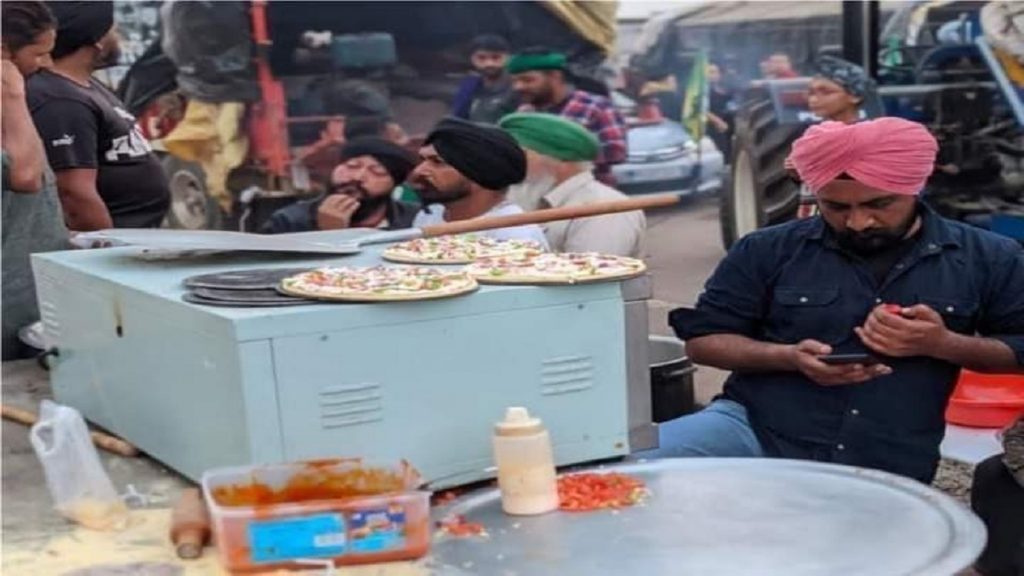
Inputs: Mohammad Javed Rasheedi, Shahrukh Shah and Vikram
You may like
-
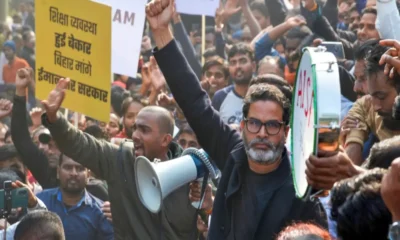

BPSC results out: Aspirants react as controversy, protests over paper leak persist
-
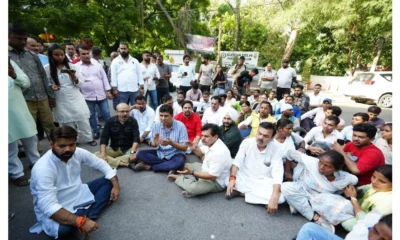

Saurabh Bhardwaj, AAP leaders detained while protesting near LG house over Delhi bus marshals issue
-
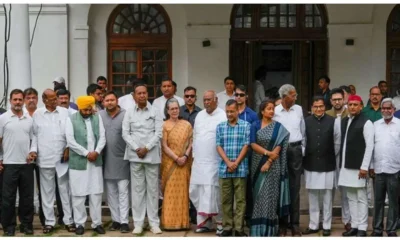

INDIA bloc to protest against Arvind Kejriwal’s deteriorating health on July 30
-


INDIA group prepares to hold joint protests following assembly elections
-


Chandrababu Naidu arrest: TDP workers call for bandh in Andhra Pradesh
-
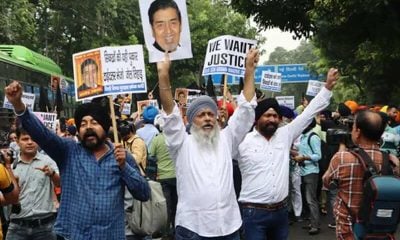

Anti-Sikh riots case: Delhi Sikh Gurdwara Management Committee protests against Congress leader Jagdish Tytler outside court
India News
BJP and Shiv Sena reach broad seat-sharing deal ahead of BMC elections
BJP and Shiv Sena are close to finalising seat-sharing for 200 wards ahead of the BMC elections, while opposition parties intensify alliance talks across Maharashtra.
Published
6 hours agoon
December 27, 2025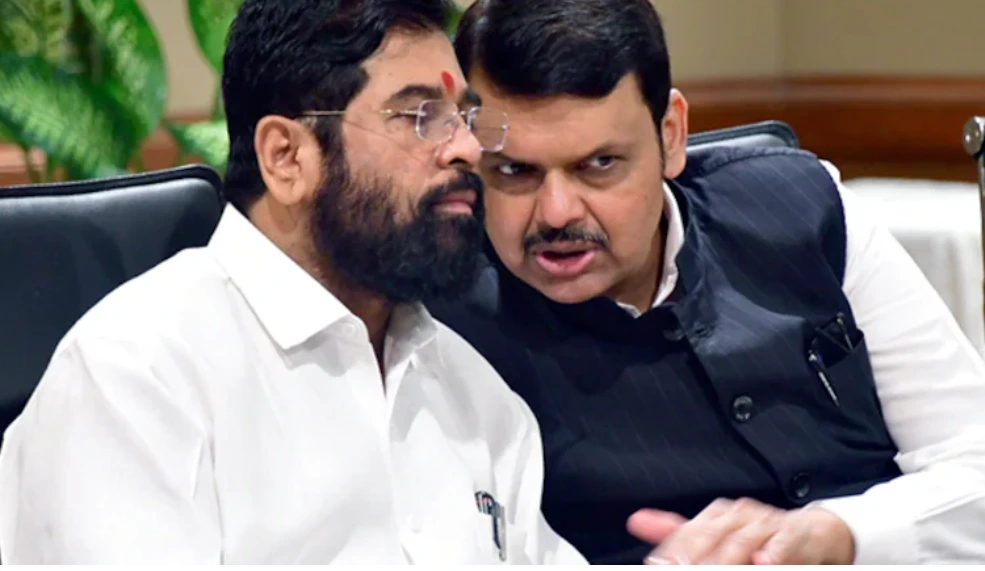
The BJP and Shiv Sena have almost sealed their seat-sharing arrangement for the upcoming Brihanmumbai Municipal Corporation (BMC) elections, with an understanding reached on 200 of the total 227 wards in Mumbai, according to sources. The civic body polls are scheduled to be held on January 15.
The agreement was discussed during a late-night meeting of the Mahayuti alliance, which includes the BJP, Shiv Sena and the Ajit Pawar-led NCP. The meeting took place at Maharashtra Chief Minister Eknath Shinde’s residence in Thane and focused on strategy for several key municipal corporations, including Thane, Kalyan-Dombivli and Navi Mumbai.
Sources said similar meetings are lined up for Mumbai and other civic bodies such as Chhatrapati Sambhaji Nagar, Panvel and Mira-Bhayandar, as alliance partners work to finalise ward-level arrangements and campaign planning.
Congress explores new alliances in Mumbai
In Mumbai, Congress leaders are scheduled to meet Prakash Ambedkar’s Vanchit Bahujan Aghadi as the party looks to rebuild its alliance structure after parting ways with the Shiv Sena (Uddhav Balasaheb Thackeray faction). The distancing followed Sena (UBT)’s decision to join hands with the Maharashtra Navnirman Sena led by Raj Thackeray.
Sena (UBT) MP Sanjay Raut has confirmed that the party will contest the BMC elections in alliance with the MNS and the NCP led by Sharad Pawar. The inclusion of the NCP (Sharad Pawar faction) comes after Sharad Pawar rejected a proposal from the Ajit Pawar-led faction that offered limited seat allocation.
Despite the split, sources indicated that discussions may continue, with meetings expected between Sharad Pawar’s daughter Supriya Sule and her cousin Ajit Pawar to determine future political moves.
Local body strategies take shape across Maharashtra
Meanwhile, MNS chief Raj Thackeray is set to hold a meeting with party leaders at his Shivtirth residence to finalise the party’s election strategy, including campaign issues and candidate selection.
In Chhatrapati Sambhaji Nagar, Shiv Sena MLA and minister Sanjay Shirsat will meet BJP leaders, including state ministers Chandrakant Bawankule and Atul Save, to discuss preparations for the civic polls.
Seat-sharing talks are also underway in Mira-Bhayandar, where Shiv Sena leader Pratap Sarnaik and BJP MLA Narendra Mehta are expected to hold discussions. The Ajit Pawar-led NCP, however, is planning to contest the elections independently in the region.
Panvel is set to witness a major opposition meeting involving Sena (UBT), Congress, MNS, NCP (SP), Samajwadi Party and the VBA. The gathering, led by the Peasants and Workers Party, will focus on finalising seat-sharing arrangements and joint election strategies.
India News
Op Aaghat 3.0: Delhi police arrest over 280 accused ahead of New Year celebrations
Delhi police arrested over 280 accused and detained more than 1,300 individuals under Operation Aaghat 3.0 ahead of New Year, seizing weapons, drugs, liquor and stolen items.
Published
9 hours agoon
December 27, 2025
Delhi police carried out a large-scale preventive crackdown across sensitive pockets of the national capital ahead of New Year, arresting hundreds of accused and detaining over a thousand individuals to ensure peaceful celebrations.
The overnight operation, conducted under Operation Aaghat 3.0, focused on crime-prone areas and resulted in major seizures, including illegal weapons, narcotics, illicit liquor, cash and stolen property, according to police officials.
Major arrests and seizures during the drive
As part of the intensified security drive, at least 285 accused were arrested under various legal provisions, including the Arms Act, Excise Act, NDPS Act and Gambling Act. In addition, 504 people were detained as a precautionary measure to prevent any untoward incidents during the festive period.
Police officials said the operation led to the recovery of 21 illegal weapons, including country-made pistols, along with 20 live cartridges and 27 knives. Authorities also seized over 12,000 quarters of illicit liquor, around Rs 2.5 lakh in cash, and nearly 7 kg of cannabis from different locations.
Focus on habitual offenders and vehicle theft
The crackdown also targeted repeat offenders. Under the operation, 116 habitual offenders, referred to by police as “bad characters,” were taken into custody, while 10 property offenders were arrested.
To curb vehicle-related crimes during New Year celebrations, police dismantled auto-lifting networks and arrested five auto-lifters. During the raids, 231 two-wheelers and one four-wheeler were seized.
Action against gambling and stolen goods
In a parallel action against gambling activities, police recovered Rs 2.3 lakh in cash. The operation also led to the recovery of about 210 stolen or lost mobile phones, offering relief to several complainants.
Apart from arrests and detentions, a total of 1,306 individuals were rounded up under preventive measures, officials added, stating that the coordinated effort was aimed at maintaining law and order and ensuring a crime-free New Year in the capital.
India News
Over 2,000 Maoists surrender under Chhattisgarh rehabilitation policy, says CM Vishnu Deo Sai
Chhattisgarh Chief Minister Vishnu Deo Sai said more than 2,000 Maoists have surrendered under the state’s rehabilitation policy, which offers skill training, financial assistance and land support.
Published
9 hours agoon
December 27, 2025
Chhattisgarh Chief Minister Vishnu Deo Sai on Friday said that more than 2,000 Maoists have surrendered so far under the state’s rehabilitation policy, asserting that the government is committed to treating surrendered cadres fairly and supporting their reintegration into society.
Addressing the issue, the Chief Minister said the state government has repeatedly appealed to Maoists to abandon violence and gunfire and return to the mainstream of development. He said the impact of these efforts is now visible, with a large number of cadres laying down arms.
According to Vishnu Deo Sai, the rehabilitation framework focuses on long-term welfare. Surrendered Maoists are being provided skill training along with monthly financial assistance of Rs 10,000. He added that the new policy also includes provisions for allotment of land for farming and land to build houses in urban areas, aimed at securing their future and livelihood.
Fresh surrenders reported from Bijapur
Earlier, 34 Naxals surrendered in Chhattisgarh’s Bijapur district under the state government’s rehabilitation initiative titled Poona Margham: Punarvas Se Punarjeevan (Return to the Mainstream: Social Reintegration through Rehabilitation). Police officials said the surrendered cadres were carrying a cumulative reward of Rs 84 lakh.
Officials noted that the latest surrenders reflect the growing impact of sustained anti-Naxal measures combined with confidence-building initiatives focused on welfare and reintegration.
Centre’s target to eliminate Naxalism by March 2026
The Chief Minister’s remarks come amid the Central Government’s stated goal to eradicate Naxalism from the country by March 2026 under the leadership of Prime Minister Narendra Modi. Authorities believe that rehabilitation-driven policies, along with security operations, are playing a key role in weakening the influence of Left-wing extremism in affected regions.

CBI moves Supreme Court against suspension of Kuldeep Sengar’s life sentence in Unnao rape case

Bangladeshi singer James’ concert cancelled after mob attack in Faridpur

Op Aaghat 3.0: Delhi police arrest over 280 accused ahead of New Year celebrations

BJP and Shiv Sena reach broad seat-sharing deal ahead of BMC elections

Over 2,000 Maoists surrender under Chhattisgarh rehabilitation policy, says CM Vishnu Deo Sai

BJP and Shiv Sena reach broad seat-sharing deal ahead of BMC elections

Op Aaghat 3.0: Delhi police arrest over 280 accused ahead of New Year celebrations

Over 2,000 Maoists surrender under Chhattisgarh rehabilitation policy, says CM Vishnu Deo Sai

Bangladeshi singer James’ concert cancelled after mob attack in Faridpur

CBI moves Supreme Court against suspension of Kuldeep Sengar’s life sentence in Unnao rape case
Afghan Men Try To Hang With The Jet Engine Of The Aircraft in Kabul- Afghanistan News – Kabul News
Trending Top 10 News: 10000 Crore Fine on Flipkart, Apple to Launch Unique Feature, Hdfc Bank Job Ad
Trending Top 10 News: Nokia 6310, Apple sales, Bachpan ka Pyar Video Kid, Dainik Bhaskar IT Raid
Trending Top 10 News: Canada bans Indian flights, Rain in Delhi NCR, AIMIM Twitter hacked, Raj Kundra case
Trending Top 10 News: Shein India, Apple New Service, Pocket Oxygen, Oppo Launched New Phone
Trending
-

 India News10 hours ago
India News10 hours agoCBI moves Supreme Court against suspension of Kuldeep Sengar’s life sentence in Unnao rape case
-

 India News9 hours ago
India News9 hours agoBangladeshi singer James’ concert cancelled after mob attack in Faridpur
-

 India News9 hours ago
India News9 hours agoOp Aaghat 3.0: Delhi police arrest over 280 accused ahead of New Year celebrations
-

 India News6 hours ago
India News6 hours agoBJP and Shiv Sena reach broad seat-sharing deal ahead of BMC elections
-

 India News9 hours ago
India News9 hours agoOver 2,000 Maoists surrender under Chhattisgarh rehabilitation policy, says CM Vishnu Deo Sai

